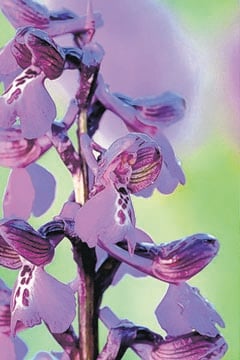Many of our popular garden plants have been bred for their looks alone, the bigger and brighter the flowers the better.
They might be pretty to look at but for our gardens' wildlife they're as much use as a plastic poppy.
When we think of wildlife habitats, the plains of Africa might spring to mind but there's a place very much closer to home where we can see how nature works every day and that's right outside the back door in our own garden.
We've all heard of the plight of honey bees and charities like the RSPB continue to tell us that bird species are still declining which is not good news, but there is a huge amount we can all do to help.
Think of our gardens as habitats where every living thing is interrelated and important and when we use pesticides and herbicides we destroy part of that delicate relationship.
In simple terms the soil feeds the plants, the plants feed the insects and they in turn feed the amphibians, mammals and birds.
Understanding our gardens in this way we can see just how important the plants we use are and wild flowers which have evolved to be happy in our soil and climate are perfect.
Together with more ornamental plants which have kept their ability to provide nectar and pollen and can extend the season of plenty for insects, they can be basis of a happy healthy environment and a very beautiful garden.
If you'd like to learn more about what and how to plant come to The Bee Festival on July 14th 12pm to 4pm at the Shire Hall, where garden designer Cheryl Cummings and Gilly Pollock from Monmouthshire Meadows will be happy to help. For details of our study day at Pentwyn Farm please phone 01600 719014 for more details.

Comments
This article has no comments yet. Be the first to leave a comment.